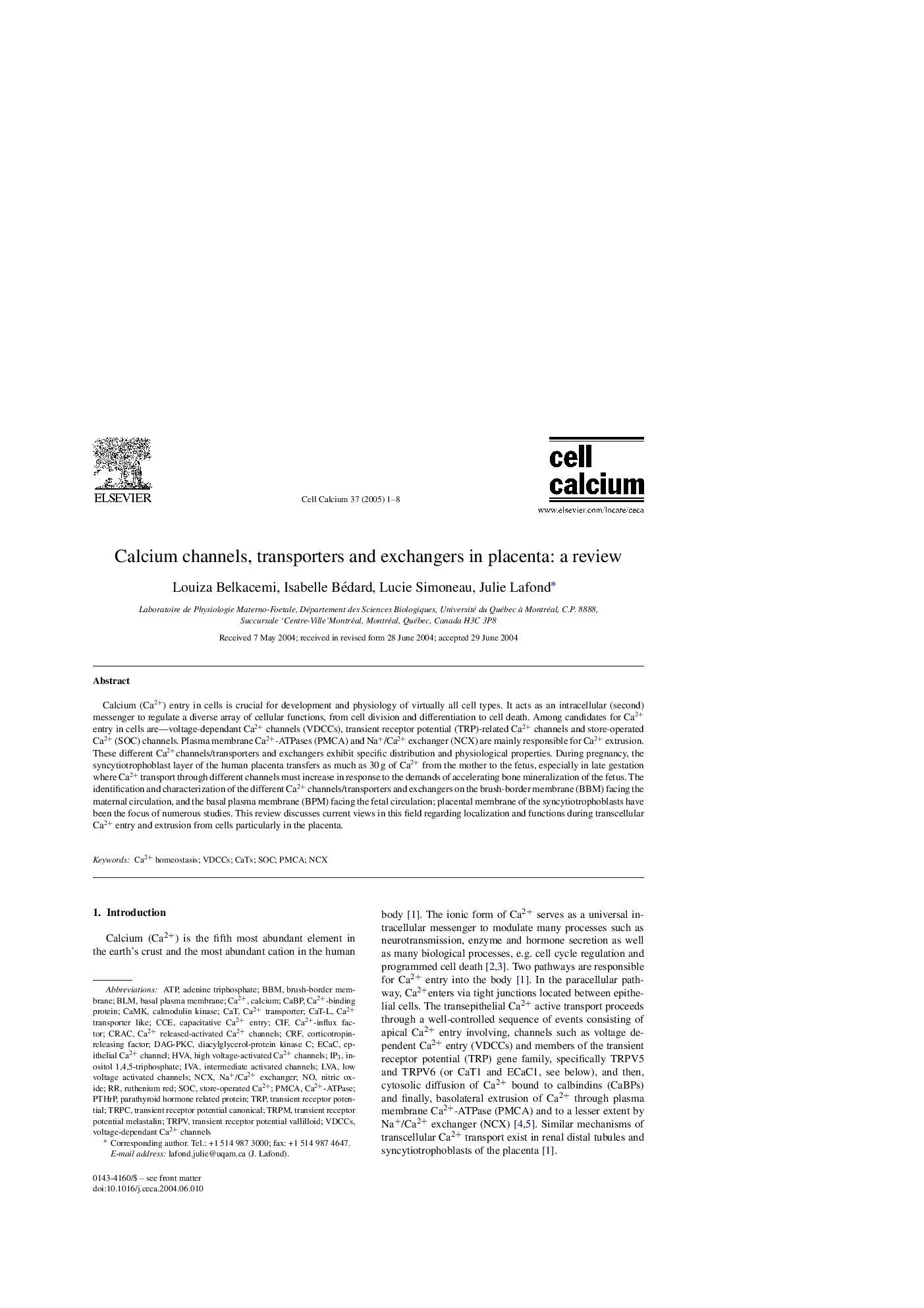| Article ID | Journal | Published Year | Pages | File Type |
|---|---|---|---|---|
| 10926521 | Cell Calcium | 2005 | 8 Pages |
Abstract
Calcium (Ca2+) entry in cells is crucial for development and physiology of virtually all cell types. It acts as an intracellular (second) messenger to regulate a diverse array of cellular functions, from cell division and differentiation to cell death. Among candidates for Ca2+ entry in cells are-voltage-dependant Ca2+ channels (VDCCs), transient receptor potential (TRP)-related Ca2+ channels and store-operated Ca2+ (SOC) channels. Plasma membrane Ca2+-ATPases (PMCA) and Na+/Ca2+ exchanger (NCX) are mainly responsible for Ca2+ extrusion. These different Ca2+channels/transporters and exchangers exhibit specific distribution and physiological properties. During pregnancy, the syncytiotrophoblast layer of the human placenta transfers as much as 30Â g of Ca2+ from the mother to the fetus, especially in late gestation where Ca2+ transport through different channels must increase in response to the demands of accelerating bone mineralization of the fetus. The identification and characterization of the different Ca2+ channels/transporters and exchangers on the brush-border membrane (BBM) facing the maternal circulation, and the basal plasma membrane (BPM) facing the fetal circulation; placental membrane of the syncytiotrophoblasts have been the focus of numerous studies. This review discusses current views in this field regarding localization and functions during transcellular Ca2+ entry and extrusion from cells particularly in the placenta.
Keywords
BLMPTHrPTRPMCIFTrpNCXCRACCaBPTRPVTRPCIP3CaMKPMCAECACCRFstore-operated Ca2+LVACCEBBMCATVDCCsbasal plasma membraneCa2+Ca2+-ATPaseInositol 1,4,5-triphosphateNa+/Ca2+ exchangerATPAdenine triphosphateruthenium redSOCcorticotropin-releasing factorBrush-border membraneIVANitric oxideCa2+ homeostasisCapacitative Ca2+ entrytransient receptor potentialtransient receptor potential canonicalCa2+-binding proteinParathyroid hormone related proteinHVACalciumCalmodulin kinaseCats
Related Topics
Life Sciences
Biochemistry, Genetics and Molecular Biology
Cell Biology
Authors
Louiza Belkacemi, Isabelle Bédard, Lucie Simoneau, Julie Lafond,
